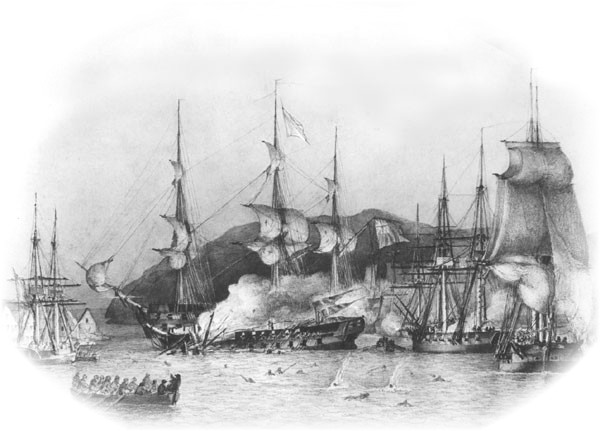
History of Lyngør
Lyngør consists of four islands:
"Lyngørsida" is the largest and lies farthest out towards the open sea. "Holmen and Odden" lie on the inside and "Steinsøya" lies to the west of these. The name presumably originates from the sagas, which call this area of the "Agder" coast. "Lim or Lunggardsida" This means the sheltered stretch, since the waters cast of Lyngør is extremely open and exposed.
These islands were used as grazing land for farmers on the mainland until permanent settling of them took place in the latter part of the 16th century. The settlement lay in the middle of the islands surrounded by some cultivatable land. Only when we reach the 18th century does the population increase, and then people sustain themselves by piloting and as seamen and build houses beside the sea.
The Dutch, English and Scots had for centuries sailed to Norway and bought timber here. A result of contact with the Dutch vessels, and girls worked in service in Dutch towns. As time went by Norway built up its own fleet and many smaller vessels were built during the 18th century. The population of Lyngør increased in accordance with the growth in shipping and in 1815 there was 31 houses in which a total of almost 200 people lived.
On 6. July 1812 during the Napoleonic Wars when the English blockaded the coast, the Danish-Norwegian frigate "Najaden" was sunk in Lyngør harbour by the English warship "Dictator". Of the 315 man crew of "Najaden". 127 were killed and many of them are buried on the eastern point of "Askerøya".

After England abolished the navigation Laws in 1849, Norway became active in foreign trade and sailed the seven seas. In "Lyngør" there were several shipowners, many skippers, mates, pilots, carpenters and able seamen. In 1900, 600 people lived at Lyngør. There were shops, post office, telegraph service, shipping office, a doctor and all kinds of craftsmen. Both English and German were taught at the large primary school. Photo: Lyngør 1900.

With the transition from sail to steam the outports lost some of their importance. The shipping companies moved away and the ships' calls became fewer. Many people went to America or moved to the towns to obtain work.
In 1960 circa 200 people lived at "Lyngør", whilst in 2004 there circa 92 permanent residents. The school where closed in 2000, but the post office and shopping, facilities and a good boat communication with the mainland is still going strong. During the summer months the population increases to about 2000 - 3000 since many people who have moved from Lyngør have kept the family house as summer residence. Photo: Lyngør to day.

In 1991 these 4 islands were given a price as "Europe's best kept village.
At the islands, where there are no wars, or crime and no roads for cars, lives approximately 90 people to day.